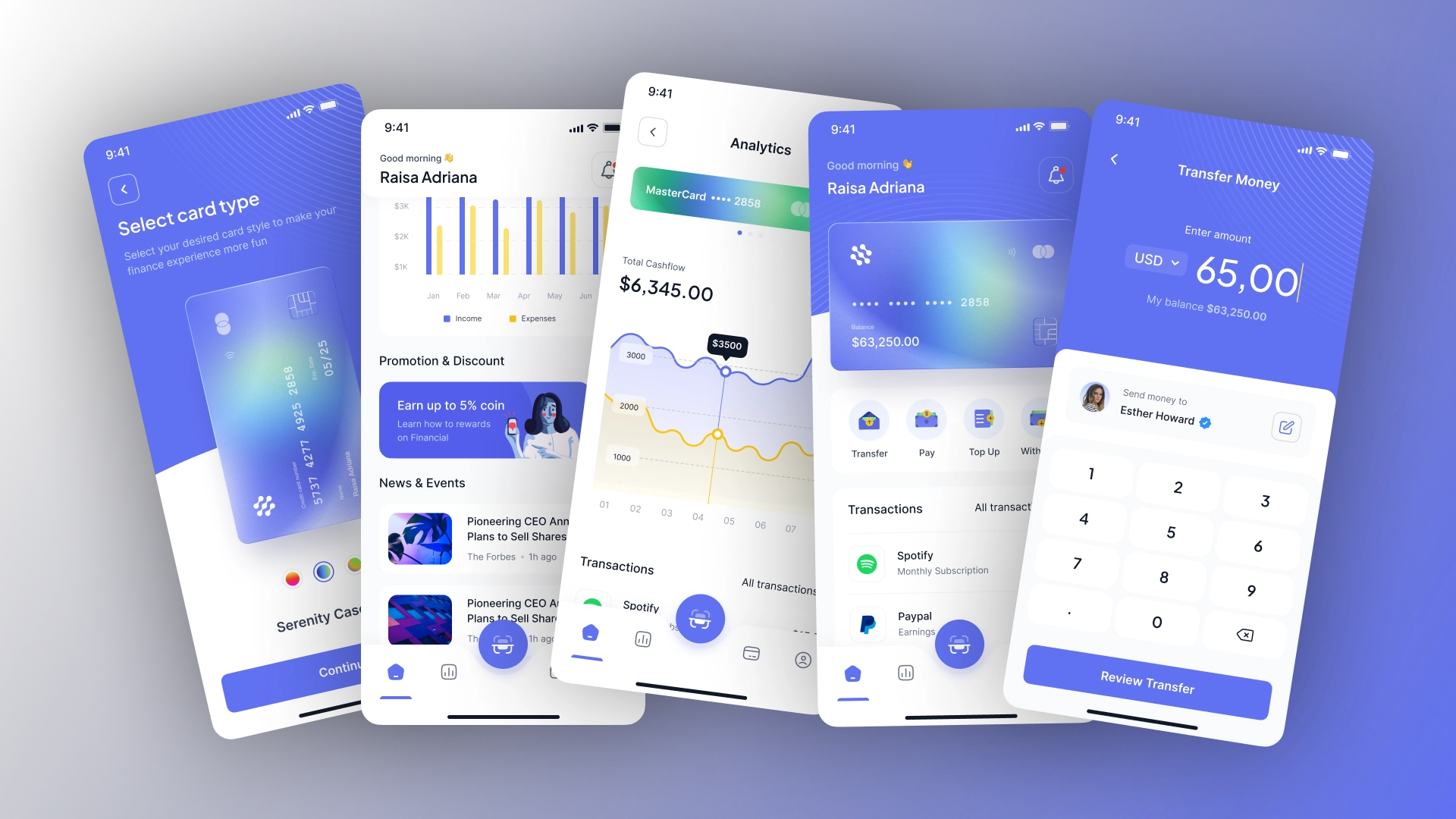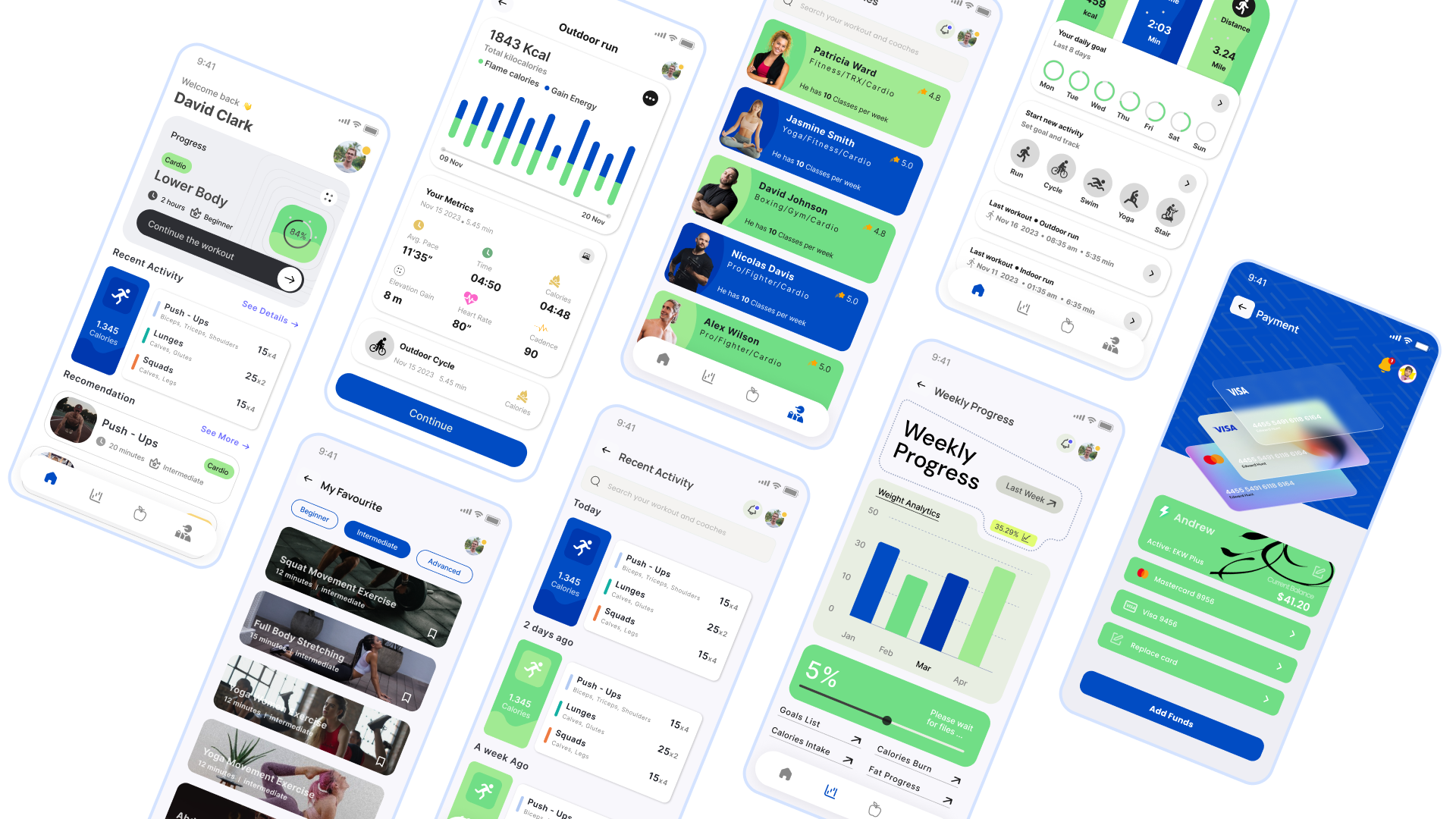









Mobile applications have long gone beyond the well-known Subway Surfers and Angry Birds. Supermarkets and pharmacies, coffee shops and cafes, not to mention small businesses, are introducing applications, where they offer to receive points in the loyalty program for downloading the application. Where did this trend come from?
According to research, out of 100% of surveyed users, about 60% use mobile devices, 38% prefer a desktop, and 2% - tablets. Almost all needs can now be covered with a smartphone: from work to paying bills and ordering groceries. Moreover, the Covid pandemic strengthened this trend, because if a business does not have an application, it loses a significant part of its profit. But popularity has a flip side — oversaturation of the market, which plays a bad joke on business, especially when the trend of behavioral factors tends to a minimum of applications on the phone. In this case, you need to do everything as correctly as possible so that the next time you clean the phone, the application is not deleted following the bored Subway Surfers. And simple rules of convenient application will help in this.
Main features for convenient use
The application should have a simple and intuitive interface that will allow users to easily understand how to use it, even if they have opened it for the first time. At the same time, it is important that the application loads quickly, for a comfortable user experience.
Users should easily find the information or app features they need. Good navigation helps them move quickly between sections and perform actions without too much effort. Users love when an app takes their preferences into account and offers personalized content or options. For example, product or service recommendations based on previous purchases or views. At the same time, the ability to send messages to the user about important events or promotions helps to keep him informed of the latest news.
If the app provides services or products, it is important that the payment and checkout process is simple and convenient. It can be facilitated by various payment methods and the possibility of quick order processing. Do not forget that the authorization system must be reliable and convenient for users. Data security is also an important feature for app usability.

Before starting development, several rules should be defined
It is not necessary to develop a full-fledged application from the very beginning. It's enough to create a minimum viable product (MVP), but it's a great idea to design it with scalability in mind. In addition to sales, MVP will allow you to expand your marketing campaign and overall audience reach.
Define goals for development
The first step in developing a mobile app is to understand the needs of the business and how a mobile app can help them. It can be automation of business processes, increased sales, improved interaction with customers, etc. Those are the aspects for which the application is needed.
Select the team that will develop the application
For development, it is worth turning to an already coordinated team that has successfully released several applications, which will save time, money and in the future will bring business profits.
Choose a platform and technologies
Choosing the right platform (iOS, Android) and development technologies (native, cross-platform, PWA) plays a crucial role in the success of a mobile application. Consider the needs of your target audience, budget, development timelines, and other factors when deciding on a platform and technology.
Technologies for application development
Conventionally, application development can be divided into several types: Native Cross-Platform and PWA application creation.
Native development means creating applications for a specific operating system (such as iOS or Android) using programming languages and tools specific to that platform. For iOS, it can be Swift, integrated development environment: Xcode and frameworks: UIKit, SwiftUI. For Android - Kotlin, Java, Android Studio integrated development environment and frameworks: Android SDK, Jetpack.
PWA app
This is a web application that can look and work like native mobile applications, but they are built using web technologies (HTML, CSS, JavaScript). They can be installed on users' devices and run offline, making them available without downloading from the App Store or Google Play.
Cross-platform development
Cross-platform development allows you to create apps that can run on different platforms (such as iOS and Android) using common code. This is achieved using frameworks and tools such as React Native, Flutter or Xamarin. Cross-platform development provides faster application creation and support for multiple platforms. Once the optimal development method has been chosen, you can start developing the idea and start planning.
Application development
Idea
Development always begins with defining the concept and goals of the application. This phase includes market analysis, competitor research, and determining business requirements for the application. It is at this stage that most of the success is determined. The product manager determines the strategy of program development and its functionality. The business analyst forms business and user requirements and all this in close communication with the Product Owner.
Interface design
Once the idea has formed into documentation, you can start creating user interface (UI) design and user experience (UX) analysis. Screen layouts, animations and other elements that make the application easy to use are created.
development
After agreeing on the design, it must be implemented technically. Development includes writing application code, creating functionality, integrating third-party services and APIs. Different stacks of technologies are used for each specific case. But, as a rule, the basis of the Frontend is HTML, CSS, JavaScript (using frameworks such as Angular, React, Vue.js). Frameworks such as Service Worker and Web App Manifest are used to develop the Web component (for adding an application to the main screen of the device)
Node.js, Python, Ruby, Go are mostly used for Backend development.
Testing and debugging
QA Engineers test the functionality of the application according to its requirements and specifications, perform load tests to verify the operation of the application under high activity, test the security of the application and analyze potential vulnerabilities.
Launch and monitoring
The adjusted application is released in the App Store and Google Play. After that, it's important to track usage metrics and user feedback.
Updates and support
By prior agreement with the Product Owner, the application development team can issue updates taking into account changes in market requirements, user feedback, and new technologies. As a result, by releasing an application before the release, the business receives many advantages.

Advantages of mobile applications for business
A mobile app allows your customers to interact with your business anytime, anywhere. They can place orders, sign up for services, receive notifications about new promotions and discounts, browse the catalog of products or services, and communicate with you via chat.
Improved marketing
The mobile application provides powerful marketing tools such as sending notifications about new products and promotions, personalized offers and discounts, loyalty programs and much more.
A new level of service
A mobile application can significantly improve service and customer interaction. It allows you to quickly answer questions, provide personalized support, and collect feedback.
Improved analytics and reporting
Mobile apps allow you to collect a lot of data about user behavior, including downloads, activity, conversions, and more.
Increasing customer loyalty
A mobile app can be a powerful tool to increase customer loyalty through loyalty programs, personalized offers and discounts, as well as convenient payment and delivery methods.
















